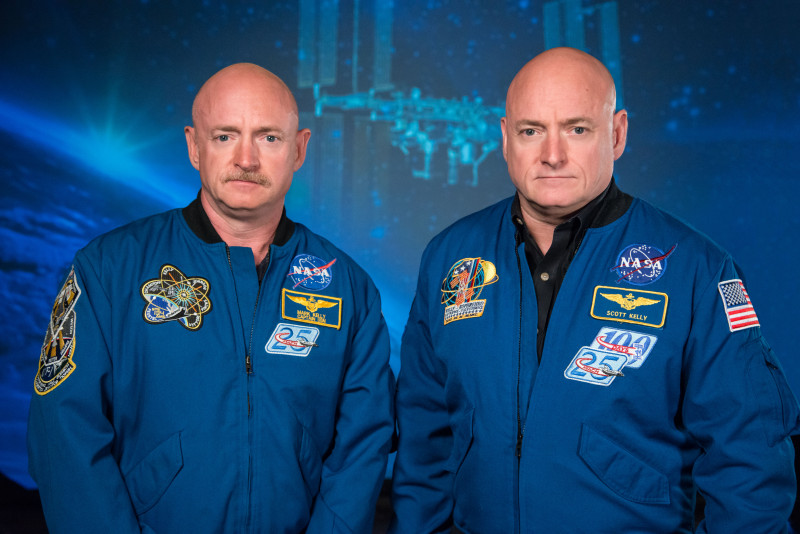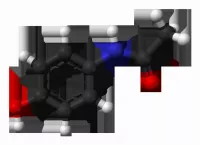The Toyota Supra is a sports car and grand tourer produced by Toyota since 1978. The name is derived from the Latin prefix meaning 'above' or 'to surpass'. Known for its performance and tuning capabilities, the Supra gained significant popularity in the automotive world, especially through its appearances in pop culture. Its impact extends to car enthusiasts and the aftermarket industry.
2 hours ago : BMW Recalls Impact Toyota Supra: Fire Risk Prompts Extensive Action and Warnings
BMW recalled over 145,000 vehicles, related to the Toyota Supra, due to a fire hazard from potential short circuits. Owners were advised to park outside. A second recall increased affected vehicles to over 341,000, due to the severity of the situation.
1978: Introduction of Celica XX
In 1978, the Celica XX was introduced, serving as the basis for the Toyota CAL-1, and offered similar comforts to the Chaser hardtop coupe, Mark II hardtop coupe, and the Crown hardtop coupe.
1978: Toyota Supra Initial Production
In 1978, the Toyota Motor Corporation began manufacturing and developing the Toyota Supra, a sports car and grand tourer. The name "supra" is derived from a Latin prefix meaning "above", "to surpass" or "go beyond".
1979: Cosmetic Changes to US Model
In mid-1979, changes were made to the US model that would be sold as the 1980 model. These were mostly cosmetic, including a redesigned center console, a digital quartz clock, redesigned side view mirrors and optional body molded mudflaps.
August 1980: Engine Upgrade for Supra
In August 1980, for the 1981 model year, the Toyota Supra received an upgrade in displacement with the 2.8-litre 5M-E engine shared with the Crown (S110).
1980: Sports Performance Package Option
In 1980, for the 1981 model year, a new Sports Performance Package became an option, including sport suspension, raised white letter tires, and front and rear spoilers. This also marked the last year that an 8-track tape player was offered in any Supra.
1980: Cosmetic Updates for US Model
In 1980, the US model of the Toyota Supra received mostly cosmetic updates, including a redesigned center console, a digital quartz clock, redesigned side view mirrors, standard 14 1/2 inch aluminium wheels, and optional body molded mudflaps.
1981: Introduction of Sports Performance Package and Discontinuation of 8-Track Player
In 1981, a new Sports Performance Package became an option for the Supra, which included sport suspension, raised white letter tires, and front and rear spoilers. 1981 also marked the last year that an 8-track tape player was offered in any Supra.
1981: Introduction of 5M-GE Engine
In 1981, for the 1982 model year, in the North American market, the Celica Supra's engine was the 2.8-litre 12-valve (two valves per cylinder) DOHC 5M-GE.
1981: Engine Upgrade and Chassis Code Change
In 1981, the Toyota Supra received an engine upgrade with the 2.8-liter 5M-E engine. The automatic transmission was changed to the revised Toyota A43D, and the chassis code was updated to MA47.
1981: Introduction of Soarer Coupe and Celica Camry Realignment
In Feb. 1981, Japanese buyers were offered an alternative to the Celica XX liftback bodystyle, called the Soarer coupé. The Celica Camry was realigned with the Japanese market Carina.
August 1982: Celica XX Features
In August 1982, the Celica XX, sold in Japan, featured fender mirrors and was available in four models, each distinguished by its engine type.
1982: Engine and Transmission Changes
In 1982, for the 1983 model year, there was an increase in power output to 150 hp and 159 lb⋅ft of torque from the same 5M-GE engine. Toyota switched to a 4.10:1 rear gear ratio for the P-type and a 3.73:1 for the L-type.
1982: Debut of Celica Supra with 5M-GE Engine
In 1982, the Celica Supra debuted with the 2.8-liter 12-valve DOHC 5M-GE engine, producing 145 hp and achieving a drag coefficient of 0.348. It accelerated from 0-60 mph in 9.8 seconds.
1982: Celica Supra Model Variations
In 1982, the Celica Supra was available in North America in two models: the "Performance Type" (P-type) and the "Luxury Type" (L-type), differentiated by options, tire and wheel sizes, and body trim.
1982: Redesign of Celica Supra for Model Year
In 1982, the Celica Supra was completely redesigned, along with the entire Celica lineup. Key differences included the front end design, fully retractable pop-up headlights, an inline-six engine, and an increase in length and wheelbase.
1982: Transmission and Suspension Features
In 1982, the standard transmission for the Celica Supra was the W58 5-speed manual, with an optional A43DL 4-speed automatic transmission for L-types. The suspension was tuned by Lotus and featured variable assisted power steering and four-wheel disc brakes.
August 1983: Celica XX Performance Upgrades
In August 1983, the Celica XX was updated with door-mounted mirrors and enhanced engine performance, featuring the same four engine options. The 5M-GEU engine's compression ratio increased to 175 PS, and the M-TEU engine was upgraded with an air-to-liquid intercooler to 160 PS.
1983: Leather Interior Option for P-Type
In 1983, a leather interior option became available for the Performance Type (P-type) of the Celica Supra.
1983: Engine Power Increase for 5-Speed Models
In 1983, for the 1984 model year, power output was increased on the 5-speed models to 160 hp and 163 lb⋅ft of torque due to a redesigned intake manifold and an increase in compression ratio.
1983: Power Increase and Transmission Update
In 1983, the Celica Supra saw an increase in power to 150 hp and 159 lb-ft of torque. The A43DL 4-speed automatic transmission was replaced with the A43DE 4-speed, featuring an electronic controller (ECT) with 'power' and 'normal' driving modes.
1984: Power Increase and Gear Ratio Changes
In 1984, the 5-speed models of the Celica Supra saw a power increase to 160 hp and 163 lb-ft of torque, achieved through a redesigned intake manifold and increased compression ratio. A 4.30:1 gear ratio was implemented in the rear differential for 5-speed models.
December 1985: End of A60 Supra Production
In December 1985, production for the A60 Supra ended in order to make way for the upcoming A70 Supra.
1985: Wheel Size Change for L-Type
In 1985, the L-type Celica Supra wheels were changed to a P-type styled 15x6 wheels.
1985: Marginal Power Increase and Performance Improvement
In 1985, the Toyota Supra's power output was marginally increased to 161 hp and torque was up to 169 lb⋅ft. The engine received a redesigned throttle position sensor (TPS), a new EGR system, and a knock sensor, resulting in an improved 0-60 mph time of 8.4 seconds.
January 1986: Introduction of A70 Supra and New Logo
In January 1986, with the introduction of the A70 Supra, a new logo was introduced for the Supra, featuring orange writing on a red background.
February 1986: Celica and Supra Split
In February 1986, the Celica and Supra became distinct models. The Celica adopted a front-wheel drive layout, while the Supra retained its rear-wheel-drive. The Supra's engine was updated to a 2,954 cc inline-six engine rated at 149 kW.
February 1986: Supra Becomes Standalone Model
In February 1986, the third-generation Supra was introduced as a stand-alone model, separate from the Celica. It was powered by a 3.0-litre DOHC inline six-cylinder engine rated at 149 kW and featured an electronically controlled independent suspension, with some models offering a removable Sport-Roof panel.
1986: 1985 P-Type Offered as 1986 Model
During the first half of 1986, due to delays in production of the third generation model, the 1985 P-type Supra was still offered for sale with minor cosmetic changes and a rear-mounted third brake light. These were officially labelled as 1986 models.
1986: New Technology Introduced
In 1986, the third-generation Supra introduced new technology, including optional 3-channel ABS and TEMS, which provided two damper rate settings, with a third activating during wide-open throttle, hard braking, and high-speed maneuvers.
1986: Supra Becomes Separate Model
In mid-1986, the A70 Supra became a separate model from the Toyota Celica, and Toyota stopped using the 'Celica' prefix, officially naming the car Supra.
1987: A70 Supra Turbo Introduced
In 1987, the A70 Supra Turbo was introduced, featuring an intercooled, turbocharged 3.0-litre inline 6-cylinder engine boosting power to 172 kW. The Turbo model included an engine oil cooler and integrated rear spoiler. A new beige/tan colour combination was implemented with only 1,000 cars produced with this scheme.
1987: Debut Win in Japanese Touring Car Championship
In 1987, the TOM'S team won on its debut in the Japanese Touring Car Championship (JTCC) with the Group-A MA70 Supra.
October 1988: Turbo-A Production
The Turbo-A was manufactured for 2 months during the period of September and October 1988 and was available strictly in Japan. Thus the term 88 Spec A.
1988: Cosmetic Changes and Trim Packages
Changes for the 1988 model year were nominal with the exception of the discontinuation of two-toned brown exterior paint. The spoiler-mounted brake light changed from a square to a trapezoid shape. In Japan, buyers could select from six different trim packages starting with the top level 3.0 GT Turbo Limited with the 7M-GTEU engine.
February 1989: A80 Production Begins
In February 1989, the production of the A80 Toyota Supra began under the leadership of Isao Tsuzuki, involving various teams for design, product planning, and engineering.
1989: Turbo Model Refinement
In 1989, further refinement on the turbo model increased power to 173 kW and 254 lb⋅ft of torque, mostly due to a redesign of the wastegate. All models used the same tyre size of 225/50R16 on 16x7 inch wheels. Spare tyres were full-sized but on steel wheels.
1989: Power Increase and Cosmetic Updates
In 1989, modifications to the wastegate actuator, feed location and engine management increased the power output of the turbo model. The protective body molding was changed, and the 'white package' was introduced. Rear 3-point seat belts were added. There were new tail lights, front bumper, side mirrors, turn signals, upper grilles, foglights, steering wheel, door panels, climate control, window switches and bezels, and stereo are added.
1990: Interior Design Changes
For the 1990 model year, changes included larger protective laminate in front of rear wheels, lower redline, redesigned steering wheel with cruise control relocated to a stalk on the right side (US only). In addition to a driver-side airbag and airbag indicator light on dashboard (US only), the left side of the switch panel was also redesigned. A plethora of the changes for the 1989 and 1990 were to the interior.
1990: A80 Design Concept Approved
In 1990, the final A80 Toyota Supra design concept from Toyota Technical Centre Aichi was approved and frozen for production later that year. The first test mules were hand-built in A70 bodies during late 1990.
March 1991: Bathurst 12 Hour Win
In March 1991, the Australian racing team Fitzgerald Racing won the first edition of the Bathurst 12 Hour.
1991: Wheel Design and Interior Color Changes
For the 1991 model year, the wheel design was changed to 5-spoke wheels. Body molding changed in colour to better match the exterior. The front "Supra" emblem was also changed to the current corporate oval Toyota symbol was used from this model year onwards. New interior colours, namely shadow gray and deep red, were introduced. Beginning in 1991, Toyota began to offer a factory spoiler-style panel sunroof.
1991: Adoption of Toyota's Current Oval Company Logo
In 1991, Toyota switched to its current oval company logo on the Supras, replacing the previous logo.
1991: Sunroof Option Added
In 1991, a metal power sliding sunroof was added as an option for all models of the third-generation Supra.
December 1992: Pre-Production of Test Models Starts
In December 1992, pre-production of the test models of the fourth-generation Toyota Supra started with 20 units made, utilizing subframe, suspension, and drivetrain assemblies from the Z30 Soarer (Lexus SC300/400).
1992: Leather Interior Updates and Subwoofer Option
For the 1992 model year, the leather shadow gray interiors received black seats and inserts. Non-turbo models lost the option of a targa top, and a new optional subwoofer was available.
April 1993: Official Mass Production Begins
In April 1993, official mass production of the fourth-generation Toyota Supra began, sharing its platform with the Lexus SC.
May 1993: Fourth Generation Supra Introduced
In May 1993, the fourth generation Toyota Supra (second generation as Supra in Japan) was introduced, offered in three trim levels: GZ, RZ and naturally aspirated SZ. Turbo models had gunmetal 16-inch wheels, while naturally aspirated models had silver wheels.
1993: A80 Supra Launched
In 1993, the A80 Toyota Supra was launched featuring two new engines: a naturally aspirated Toyota 2JZ-GE and a twin turbocharged Toyota 2JZ-GTE. It was also the first Toyota-badged vehicle to include a passenger-side airbag as standard in the US market.
August 1994: Japanese Turbo Models Improved
In August 1994, the Japanese turbo models of the Toyota Supra were improved with optional 17-inch wheels and larger brakes from export markets. The standard 16-inch wheels changed to silver like the SZ. A new trim level called SZ-R was added.
1994: TRD 3000GT Displayed
In 1994, Toyota Racing Development displayed a replica of the 1994 JGTC BLITZ Racing Team Supra GT500 race car, known as the TRD 3000GT, featuring body kit modifications for better aerodynamics.
May 1995: RZ Model Changes
In May 1995, the Toyota Supra RZ was only available with six-speed manual transmission, discontinuation of Aero Top option for GZ, standard rear spoiler for RZ and SZ-R models and a new trim called RZ-S (RZ trim with optional automatic transmission and without Bilstein sport shock absorber).
1996: Turbo Model Changes in the US
For the 1996 model year, in the US the Toyota Supra turbo model was only available with an automatic transmission due to OBD-II certification requirements. The targa roof was also made standard on all turbo models.
1996: Manual Transmission Removed (US)
In 1996, for the 1997 model year, manual transmission returned for the Toyota Supra turbo engine along with a redesign of the taillights, headlights, front turn signal, front fascia, polished wheels, wheel center caps and other minor changes such as the radio. Each of the Supras had a badge indicating "Limited Edition 15th Anniversary". All turbo models came standard with the rear spoiler.
1996: Supra Withdrawn from Canadian Market
In 1996, the Toyota Supra was withdrawn from the Canadian market due to declining sales of sport coupes and a stronger yen increasing prices.
1997: Model Year Updates
In 1997, Toyota Supra turbo engine manual transmission returned along with a redesign of the taillights, headlights, front turn signal, front fascia, polished wheels, wheel center caps and other minor changes such as the radio. Each of the Supras had a badge indicating "Limited Edition 15th Anniversary". All turbo models came standard with the rear spoiler.
1997: Updates for the 1998 Model Year
In 1997, updates for the 1998 Toyota Supra model year included a 3-spoke steering wheel and a redesigned radio.
1998: Toyota Ceases Sales of Supra in the US
In 1998, Toyota ceased sales of the fourth-generation Toyota Supra in the United States market.
1998: Supra Withdrawn from US Market
In 1998, the Toyota Supra was withdrawn from the US market. The Turbo model was not available in California Air Resources Board (CARB) states in 1998.
1998: Last Year of Supra in the US
The 1998 model year was the last year of the Toyota Supra in the US, with sales and exports for that region ceasing by the end of 1998.
2002: Worldwide Production Ends for Fourth Generation Supra
In 2002, Toyota ended the production of the fourth-generation Supra for worldwide markets.
2002: End of Fourth Generation Production
In 2002, production of the fourth-generation Toyota Supra ended for worldwide markets.
2004: Braking Record Broken
In 2004, the 1997 Toyota Supra Turbo's braking record of 149 ft (45 m) was broken by a Porsche Carrera GT, which achieved it in 145 ft (44 m).
January 2019: Fifth-Generation Supra Released
In January 2019, the fifth-generation Toyota Supra was released as the GR Supra, developed in partnership with BMW, sharing the platform and many parts from the BMW Z4 (G29).
May 2019: Fifth Generation Supra Goes On Sale
In May 2019, the fifth generation Toyota Supra went on sale after production began in March 2019. This marked the return of the Supra after production ended in 2002.
2023: New Driving Modes Introduced
In 2023, new driving modes called Hairpin+ were introduced to the fifth-generation Toyota Supra. This mode allows additional wheel-spin on one of the rear tyres to help rotate the Supra around ultra-tight hairpin turns.
Mentioned in this timeline
The United States of America is a federal republic located...
California is a U S state on the Pacific Coast...
Japan is an East Asian island country in the Pacific...

A car also known as an automobile is a wheeled...

Tokyo officially Tokyo Metropolis is the capital and most populous...

Twins are offspring resulting from the same pregnancy categorized as...
Trending

7 minutes ago Daniel Day-Lewis returns from retirement in 'Anemone,' directed by his son Ronan.
7 minutes ago GameStop Stock Surge: Leadership Lessons, Q2 Earnings, and Meme Stock Reality

1 hour ago Brock Bowers' Injury Concerns: Raiders' Crosby Also Added to Injury Report

1 hour ago Zion Williamson Cleared After Injury Scare; Jordan Poole Discusses Pelicans Chemistry
1 hour ago Topsfield Fair 2025: Concerts, Clydesdales, pumpkins, and flowers mark annual Massachusetts event.

1 hour ago St. Louis Church Receives $1M Grant to Aid Missouri Tornado Victims
Popular

Charlie Kirk is an American right-wing political activist entrepreneur and...

Candace Owens is an American political commentator and author known...

Paracetamol also known as acetaminophen is a commonly used over-the-counter...
Turning Point USA TPUSA is a conservative nonprofit organization founded...

Chuck Schumer is the senior United States Senator from New...

J D Vance is an American politician author attorney and...